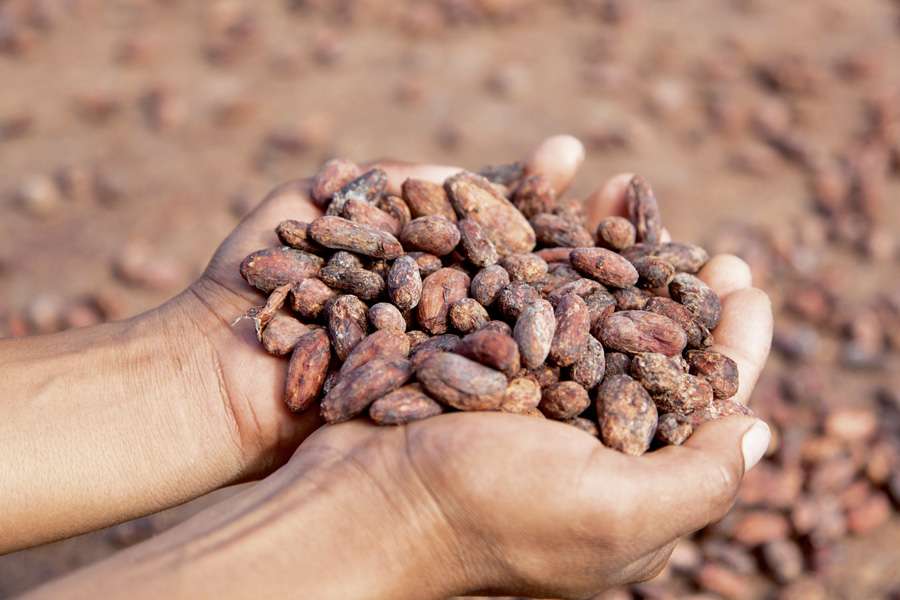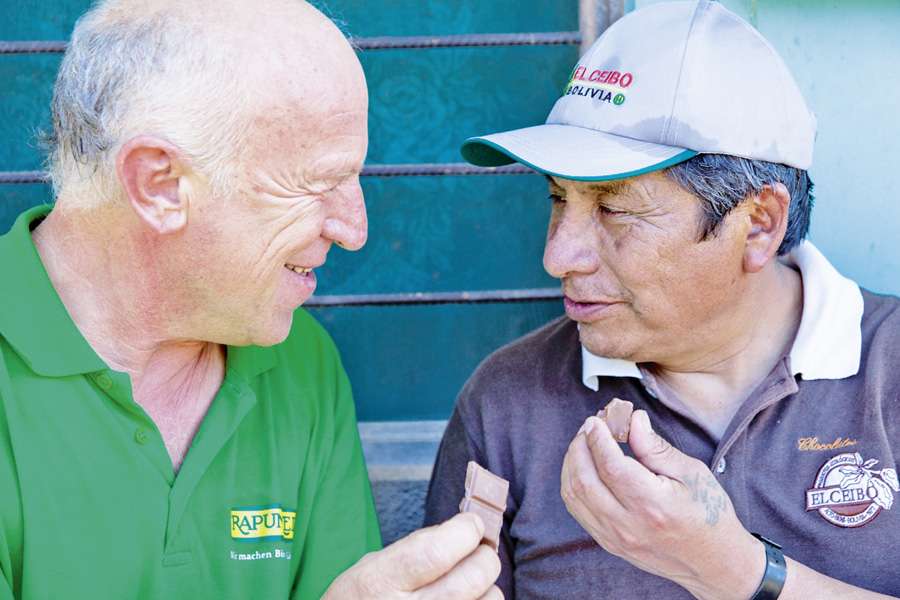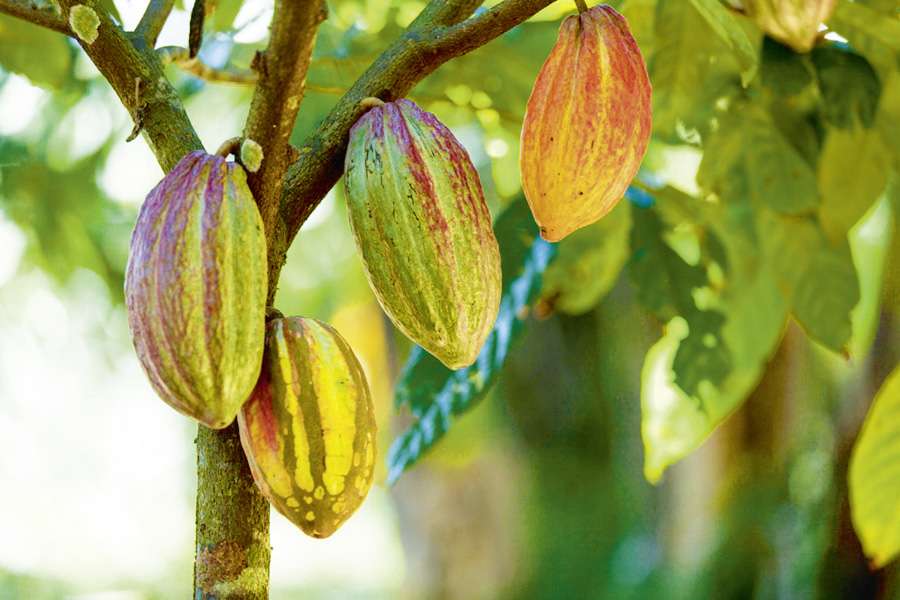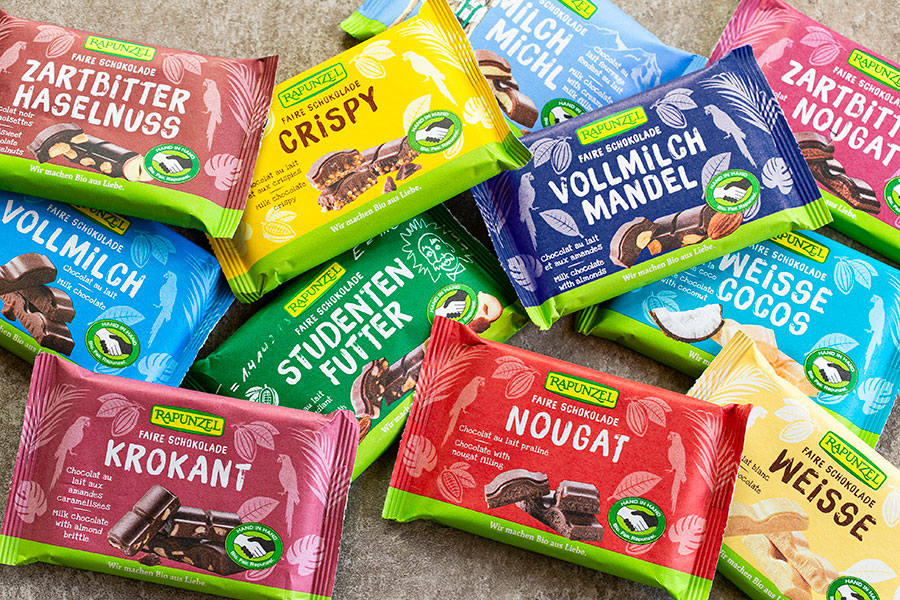Fair value chain for Rapunzel chocolate
Since we began marketing the world’s first organic chocolate in 1987, our product range has grown constantly. Rapunzel chocolate reflects the highest fair-trade standards – in combination with valuable, fairly traded ingredients from controlled organic cultivation. Because of this, all Rapunzel chocolate displays the HAND IN HAND label.
In 2012, a master’s thesis was written at our company that investigated the value chain of cocoa and chocolate. The thesis compared conventional chocolate with Rapunzel’s HAND IN HAND chocolate. It focused on the Rapunzel Bittersweet Chocolate 85 % HAND IN HAND (100 % cocoa from Bolivia). Rapunzel Milk Chocolate 38 % HAND IN HAND was also compared.
The findings are very interesting. The fair value chain of our Bittersweet Chocolate 85 % HAND IN HAND is significantly shorter and more transparent than that of conventional chocolate.
In 2012, a master’s thesis was written at our company that investigated the value chain of cocoa and chocolate. The thesis compared conventional chocolate with Rapunzel’s HAND IN HAND chocolate. It focused on the Rapunzel Bittersweet Chocolate 85 % HAND IN HAND (100 % cocoa from Bolivia). Rapunzel Milk Chocolate 38 % HAND IN HAND was also compared.
The findings are very interesting. The fair value chain of our Bittersweet Chocolate 85 % HAND IN HAND is significantly shorter and more transparent than that of conventional chocolate.
How much of the revenue from chocolate do the cocoa growers receive?

The conventional value chain is long and barely transparent
Cocoa producers in the conventional cocoa market play a relatively small role in the value chain. They are barely able to gain an overview of what is happening on the market, let alone have any influence on it (for example on pricing policy), and so they continue to live in poverty. Moreover, they are rarely able to tell which products are actually made from their cocoa. At the current time (2012), the farmer receives 3-6 euro cents for every bar of chocolate sold. (Source: Südwind study 2012, suedwind-institut.de)
Market concentration = Power concentration
In conventional trade, there is a pronounced concentration of power in the value chain: This can be seen above all among the wholesale buyers and intermediaries as well as the cocoa processors.

The vaue chain of Rapunzel HIH dark chocolate 85 % cocoa
The fair value chain of our Bittersweet Chocolate 85 % HAND IN HAND is significantly shorter and more transparent. The percentage shares of the value chain at the various levels are considerably more balanced. As a result, there is no pronounced concentration of power - everyone participates in the value chain.
The share that HAND IN HAND farmers have in the value chain is significantly higher
The El Ceibo cooperative has been Rapunzel’s cocoa supplier for more than 25 years and at the current time (2012) it receives approximately 30 cent per bar of Bittersweet Chocolate 85 % HAND IN HAND (85 g). This corresponds to a 16% share in the value chain. In a Südwind study of comparable Rapunzel Milk Chocolate 38 % HAND IN HAND, the amount is 16 euro cents per bar (100 g). This corresponds to a value chain share of approximately 9 %.
The trade routes are transparent
Representatives of El Ceibo have been our guests many times in Legau. Similarly, Rapunzel has often visited El Ceibo in Bolivia. The members of the cooperative know which products contain their cocoa and they also know their market and who their sales partners are.

Cocoa beans used to be so valuable that they were even used as currency

Joseph Wilhelm with Bernardo Apaza of El Ceibo in Bolivia. Bernardo (now sadly departed) was a fair-trade pioneer and a companion of Rapunzel for several decades

It takes a lot of steps to produce fine chocolate from this cocoa fruit.
You might also be interested in:

Product Knowledge: Cocoa

Chocolate

Chocolate made in Switzerland
